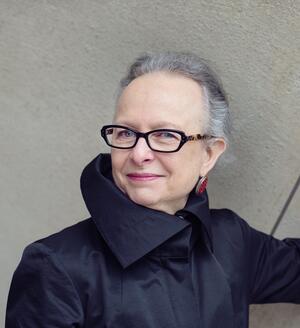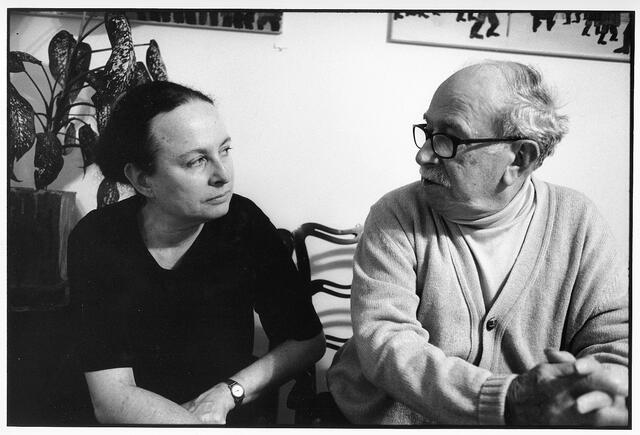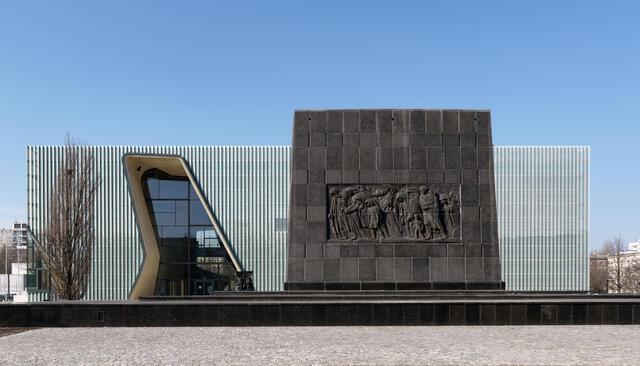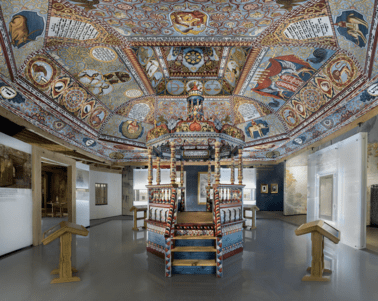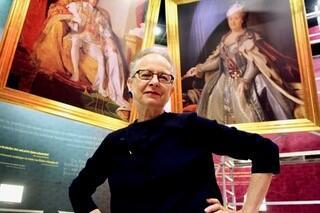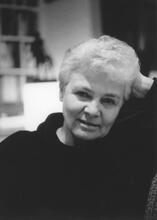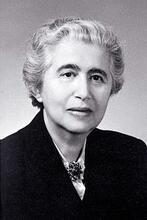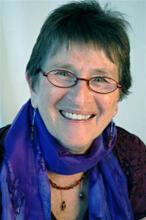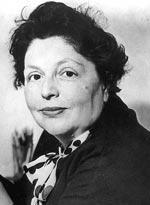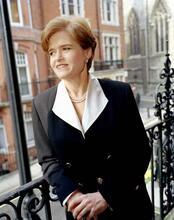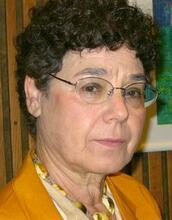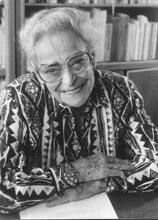Barbara Kirshenblatt-Gimblett
Barbara Kirshenblatt-Gimblett is an American folklorist, with a focus on Jewish cultures, museums, heritage, and tourism. She was a professor in several American universities and retired in 2014 from New York University. Over 50 years, her research has resulted in a distinguished body of scholarship, as well as documentary films and museum exhibitions. Her studies of museums and exhibitions asked what it means to display a culture. She demonstrated that these forms of display draw on the past and create something new, making them like performances, which reframed the study of museums. As Chief Curator of the core exhibition of the POLIN Museum, which opened in 2014 in Warsaw, she led its creation of the thousand-year history of Polish Jewry, the largest community in Europe.
Barbara Kirshenblatt-Gimblett is a folklorist with a focus on Jewish culture, and a scholar of museums, heritage, and tourism, who helped to reshape this field. Included in her nearly bottomless well of scholarship and cultural production is the study of language, food, museums, media, tourism, performance, art, music, and exhibitions, among many others. From that remarkable well, she has produced innovative research on Jews of Eastern Europe and North America, as well as reflecting on other cultures. She has translated her scholarship not only into books and articles, but also into documentary films and museum exhibitions.
Early Years
Kirshenblatt-Gimblett was born September 30, 1942, in Toronto, Ontario, to Polish immigrants Mayer Kirshenblatt from Opatów (Apt, in Yiddish) and Dora Shushanoff from Brest-Litovsk (Brisk, in Yiddish). She grew up in the Jewish immigrant neighborhood in downtown Toronto, together with two younger sisters. Her father, who had been a housepainter, opened his own paint, wallpaper, and floor covering store. Her mother was a homemaker. She attended Orde Street Public School and three Jewish after-school programs: the Farband shule, Peretz shule, and D’arcy Street Talmud Torah. When she was twelve years old, her parents moved to Bathurst Manor, a new subdivision in the north of the city. She belonged to Habonim, a Labor Zionist youth organization, and ran the Arts and Crafts program at Camp Kvutza on Lake Erie and later at Camp White Pine in Ontario. After high school, Kirshenblatt-Gimblett spent a year in Israel on her own, where she taught manual training to disabled boys and conducted research on Yemenite embroidery. She married New Zealand artist Max Gimblett in 1964.
Kirshenblatt-Gimblett entered the University of Toronto in 1962, majoring in English literature, but she completed her A.B. (1966) and M.A. (1967) in English literature at the University of California, Berkeley. She received her Ph.D. (1972) in Folklore from Indiana University, where she pursued her broad range of interests in sociolinguistics, ethnomusicology, and material culture. She held faculty positions at the University of Texas at Austin, Columbia University, the University of Pennsylvania, and from 1981 until her retirement in 2014 at New York University, where she is University Professor Emerita and Professor Emerita of Performance Studies at the Tisch School of Arts.
Creating a Scholarly Revolution
Kirshenblatt-Gimblett established her reputation as a path-breaking scholar of Ashkenaz with her 1977 book (coauthored with Lucjan Dobroszycki), Image Before My Eyes: A Photographic History of Jewish Life in Poland, 1864–1939, which was widely praised for bringing to life, visually and textually, Polish Jewry in all its diversity and vibrancy. (The historical territory of Ashkenaz extends from Alsace to Smolensk and from the Baltic to the Black Sea; its beginnings lie in German-speaking lands, especially the Rhineland.) Kirshenblatt-Gimblett was instrumental, therefore, in reorienting the image of pre-Holocaust Polish Jewry, away from the (Yiddish) Small-town Jewish community in Eastern Europe.shtetl stereotype and the foreshadowing of the genocide. The book was accompanied by a landmark exhibition of photographs from the collection of the YIVO Institute of Jewish Research at The Jewish Museum in New York City and was the basis for a documentary film.
Over time, Kirshenblatt-Gimblett focused her scholarship in new directions. Her innovative studies of Jewish textiles, food, and images are one strand that emphasized the importance of the material culture and aesthetics of everyday life. Historical studies constituted another direction. Her work on YIVO’s youth research project in Eastern Europe during the 1930s explored the emergence of interdisciplinary Jewish social science, while her work on postwar writing about the shtetl explored how Jews were constituted as an anthropological subject. She addressed not only what happened, but also how our understanding of history is influenced by scholars’ choices of what merits study.
A third strand of Kirshenblatt-Gimblett’s work centers on museums, exhibitions, world’s fairs, ethnographic artifacts, and historical sites as forms of display. What, she asked, is the impact of “showing” on what is seen? As museums become destinations, and tourism makes the world into a museum where techniques of display send powerful messages, how have tourism and museums begun to resemble one another? Museum exhibits of many types are closer to theatrical performances than passive displays. Exploring these themes, she opened critical new conversations among scholars and museum professionals about what happens in the act of displaying. Similarly, heritage is not a matter of what happened in the past, but, as she writes, it is a mode of cultural production that has recourse to the past and creates something new. She also put display in the context of power, asking who controls who is seen and what is excluded and by whom. Taken together, this work transformed the studies of tourism, heritage, and museums into a deep engagement with performance and the politics of culture. Her 1998 book Destination Culture: Tourism, Museums, and Heritage is the touchstone for those conversations.
Kirshenblatt-Gimblett combined many of these interests into a remarkable and deeply personal project in the 2007 book she created with her father. They Called me Mayer July: Painted Memories of a Jewish Childhood in Poland Before the Holocaust is based on 40 years of recorded interviews and the paintings of Mayer Kirshenblatt, a self-taught artist who began painting at 73. Their collaboration reveals an unsentimental and dazzlingly textured view of life in his Polish town before World War II. The book was accompanied by a traveling exhibition and a documentary film, “Paint What You Remember.”
A Museum Visionary for POLIN Museum
Kirshenblatt-Gimblett’s scholarly interests were united in an extraordinary opportunity: to serve as the Chief Curator of the core exhibition of POLIN Museum of the History of Polish Jews, in Warsaw. This exhibition presents the thousand-year story of Polish Jewry, the largest Jewish community in Europe. The museum opened in 2014 as a remarkable three-way partnership between the Ministry of Culture and National Heritage, the City of Warsaw, and the Association of the Jewish Historical Institute of Poland, the Jewish NGO in Poland that initiated the project. The Museum stands on the site of the Warsaw Ghetto, facing the Monument to the Ghetto Heroes. Unveiled in 1948, the Monument commemorates the Great Deportation of 300,000 Jews from the Warsaw Ghetto to the Treblinka death camp in 1942 and the 1943 Warsaw Ghetto Uprising, the first major civilian revolt against the Germans. The museum completes the memorial complex by honoring how Polish Jews lived. Chancellor Arnold Eisen of the Jewish Theological Seminary noted how rare it is for a museum not only to chronicle history, but to make it as well, which is the achievement of POLIN Museum.
Kirshenblatt-Gimblett and her team were able to translate many of her innovative ideas about museums to the core exhibit. They rejected the concept of a “master narrative,” which would offer a single story about Polish Jews, in order to emphasize instead the complexity of Jewish experience, debates among Jews about their lives, and the centrality and changing nature of their relationships with non-Jewish Poles. It draws on sources from, and not about, the periods portrayed, which include artifacts, sacred texts, letters, images, and most spectacularly, the recreation of a Polish wooden synagogue ceiling and roof, constructed by artisans and volunteers from throughout Poland and around the world. As visitors walk through the museum, the story moves with them and emphasizes that no specific events, certainly not the Holocaust, are the single trajectory by which to understand Polish Jewish history. POLIN Museum won the major European awards for excellence, and as of 2020 surpassed 4 million visitors.
Recognition and Leadership

Folklorist and curator Barbara Kirshenblatt-Gimblett, 2015. Photograph by Krzysiek Krzysztofiak. Courtesy of Barbara Kirshenblatt-Gimblett.
This outstanding scholar received dozens of fellowships and awards that recognize her accomplishments and her entire body of work. She was elected to the American Academy of Arts and Sciences and received honorary doctorates from the University of Haifa, Indiana University, and the Jewish Theological Seminary. She was awarded the Marshall Sklare Award for distinction in the social scientific study of Jewry, as well as a lifetime achievement award from the Foundation for Jewish Culture. The President of Poland awarded her the Officer’s Cross of the Order of Merit of the Republic of Poland. In 2020, she received the prestigious international Dan David Prize in the area of Cultural Preservation and Revival. Equally impressive are the museums she advises on three continents and the dozens of scholarly and editorial boards on which she serves.
Barbara Kirshenblatt-Gimblett instructed, advised, and inspired several generations of scholars in North America, Europe, and Israel who are interested in the questions of how humans make and display culture. Her generosity to students and colleagues is legendary, as is her legacy as a scholar and public intellectual.
Selected Works by Barbara Kirshenblatt-Gimblett
Dobroszycki, Lucjan and Barbara Kirshenblatt-Gimblett. Image before My Eyes: A Photographic History of Jewish Life in Poland, 1864–1939. Yivo Institute for Jewish Research; Jewish Museum. New York: Schocken Books, 1977.
Goldberg, Harvey and Samuel Heilman and Barbara Kirshenblatt-Gimblett. The Israel Experience: Studies in Youth Travel and Jewish Identity. Jerusalem: Studio Kavgraph, 2002.
Joselit, Jenna Weissman, Barbara Kirshenblatt-Gimblett, Irving Howe, and Susan Braunstein. Getting Comfortable In New York: The American Jewish Home, 1880-1950. New York: the Jewish Museum, 1990.
Karp Ivan, Corrine A. Kratz, et al. with Barbara Kirshenblatt-Gimblett eds. Museum Frictions: Public Cultures/Global Transformations. Durham and London: Duke University Press, 2006.
Kirshenblatt-Gimblett, Barbara. Destination Culture: Tourism, Museums, and Heritage. Berkeley: University of California Press, 1998.
Kirshenblatt-Gimblett, Barbara and Arthur Hertzberg, Robert Pinsky. Writing a Modern Jewish History: Essays in honor of Salo W. Baron, 1895-1989. New York: Jewish Museum, under the auspices of the Jewish Theological Seminary of America. New Haven: Yale University of Press, 2006.
Kirshenblatt-Gimblett, Barbara and Jonathan Karp eds. The Art of Being Jewish in Modern Times: Jewish Culture and Contexts. Philadelphia: University of Pennsylvania Press, 2008.
Kirshenblatt-Gimblett, Barbara and Cissy Grossman. Fabric of Jewish Life: Textiles from the Jewish Museum Collection. New York: Jewish Museum, 1977.
Kirshenblatt-Gimblett, Barbara and Jeffrey Shandler eds. Anne Frank Unbound: Media, Imagination, Memory. Bloomington: Indiana University Press, 2012.
Kirshenblatt, Mayer and Barbara Kirshenblatt-Gimblett. They Called Me Mayer July: Painted Memories of a Jewish Childhood in Poland Before the Holocaust. Berkeley: University of California Press, 2007.
Websites
http://www.nyu.edu/classes/bkg/web/ (a selected bibliography of Barbara Kirshenblatt-Gimblett’s articles)
https://www.youtube.com/watch?v=a3c3akgWj2A&list=PLA7EcGwOEQzTsQrl8H74vnDpEFt0Yyvr- (Wexler Oral History Project, National Yiddish Book Center, Interviews with Barbara Kirshenblatt-Gimblett)
https://www.youtube.com/channel/UCU1nwBr_kBkM7_c7b7Hmgmg (Barbara Kirshenblatt-Gimblett’s YouTube channel)
https://www.youtube.com/watch?v=fisq-tsbDjg (POLIN Museum)
https://www.youtube.com/watch?v=bTC7w-qDEwc&list=PLA7EcGwOEQzRKnXpQNVwlxaZAgzAC155P&index=21 (The 2015-16 Aaron Roland Endowed Lecture with Barbara Kirshenblatt-Gimblett)

